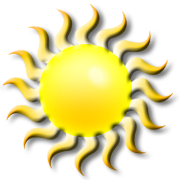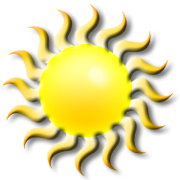Information
-
Audit Title
-
Client / Site
-
Conducted on
-
Prepared by
-
P = Priority (-15%); PF = Priority Foundation (-5%); C - Core (-1.5%)
GENERAL
-
C 505. Evidence of current Food Manager Certification is provided for all employees as legally required.
-
C 507. Foodborne Illness Complaint Sign is posted by the phone.
CHEMICALS / CLEANING
-
C 301. All cleaning and sanitizing chemicals are USDA/FDA approved and properly used in accordance with label instructions. MSD sheets are provided for all chemicals used. No use of off the shelf chemicals is permitted.
-
P 303. All toxic chemicals are properly stored in an area separate from food, equipment, utensils and single service items.
-
C 302. All spray bottles are properly labeled as to contents and used only for the purpose intended.
-
PF 311. Sanitizer concentrations (buckets/sinks/spray bottles). Employees understand and practice proper sanitization procedures. All employees know how to mix and use sanitizer and test for proper concentration of sanitizer in the utensil washing sinks (two or three compartment). The appropriate test strips and/or chemical testing kits are readily available.
-
Confirm that the chemicals are the proper concentration.
Test Results
-
Sanitizer Concentration:
-
Produce Fresh Concentration:
-
Chlorine Concentration (dishwashers):
-
SaniSave Concentration:
-
C 313. Sinks (2 or 3 part) for cleaning and sanitizing are clean, functioning properly with hot and cold running water, drain plugs are provided.
-
C 309. In-use wiping cloths for counters and other equipment surfaces are clean and stored in sanitizer solution when not in use.
-
C 910. All mop water is properly disposed in service sink or mop sink.
-
C 904. All cleaning supplies and equipment are clean and properly stored. Hoses, mops, brooms, etc. are stored off of the floor when not in use.
-
PF 901. A sanitation schedule is present and followed daily. Sanitation logs are present and up to date for all equipment, floors, floor drains, walls, ceilings, etc.
HOUSEKEEPING / STORAGE
-
C 915. Condensers, overhead fans, overhead pipes and sprinkler heads are clean and free of debris or leaks.
-
C 922. Floors are in good repair and easily cleaned. No debris on the floor. Floor wall junctures are properly coved with coving in good repair and sealed.
-
C 907. All floor drains are clean and functioning properly; floors and floor drains are free of standing water.
-
C 937. Walk-In Coolers: walls, floors, ceiling, shelving: clean, dry, odor-free, no standing water.
-
C 935. Trash cans are provided; clean and well maintained, and not touching product or product contact surfaces.
-
C 930. Deli prep area is neat, clean & well organized. No unnecessary items present such as cardboard, boxes or unused equipment.
-
C 911. All packaging material and supplies such as foam trays, wrapping materials, etc. are properly stored to prevent contamination. Supplies are elevated 6" off of the floor. Storage shelves are clean.
-
C 908. All food is properly stored at least 6" above the floor and stored in such a manner as to prevent contamination. Storage shelves are clean.
-
P 509. No evidence of rodents or other pests in the facility.
LOGS
-
PF 312. Sanitizer Concentration Log is present and up to date. Corrective action is documented when necessary.
-
PF 712. Cooler Temperature Log present and up to date for all units that don't have electronic monitoring. Corrective action is documented when necessary.
-
PF 601. Employee Illness Log filled out. Corrective action is documented when necessary.
FOOD CONTACT SURFACES / FOOD HANDLING
-
PF 1008. Thermometers are provided for monitoring of food temperatures. Thermometers must be calibrated (+/- 2°F) and properly sanitized.
-
Did you observe or conduct thermometer calibration?
-
C 1004. Cases are properly stocked with no product above the fill line or stored on air vents.
-
P 1003. All potentially hazardous foods throughout the department including those in display cases, prep areas, coolers, walk-in boxes, salad bars, buffets, etc. are maintained at the proper temperatures; refrigerated foods at 41°F or below; frozen foods at 0°F or below and hot foods at 140°F or higher. (Samples can utilize TPHC).
-
Monitor and record temperatures:
Product Temperatures:
-
Case / Station:
-
Product Temperature(s):
-
PF 803. All food products throughout the deli department, including display cases, refrigeration units, storage areas, etc. are properly stored to prevent contamination. All open product is properly protected, with no potential for cross contamination between raw and cooked or RTE items. (i.e. fans, cardboard boxes, condenser units, improper stacking order, etc).
-
C 310. Prep tables and work surfaces cleaned and sanitized as often as necessary; work surfaces are in good condition and easily cleanable.
-
P 805. Bare hand contact with RTE is prohibited and employees are observed using suitable utensils such as deli tissue, spatulas, tongs, single use gloves or other dispensing equipment. If single use gloves are provided, personnel are instructed as to proper glove use and are observed using gloves correctly.
-
PF 805. Other deviations from glove policy (including fake nails, nail polish, bandaids, etc)
PERSONAL HYGIENE / HANDWASHING
-
P 601a. Food handlers have no obvious signs of illness or open wounds on hands.
-
PF 602. Employees are practicing proper hand washing procedures.
-
C 603. Handwashing signs are posted above all hand sinks in restrooms and food preparation areas.
-
PF 604. Handwashing sinks are adequate in number and easily accessible in all food preparation areas. All sinks have hot and cold (or tempered) running water and are properly stocked with soap, disposable towels and trash cans and handwashing instructions. Splash guards are present where needed.
-
C 608. Staff in open food or food handling areas are properly wearing hair restraints.
-
C 610. Staff: Clean, well groomed appearance. Clean protective clothing such as uniforms and aprons are worn when required. Aprons and other protective clothing are removed before going to restrooms or on break and stored in a sanitary manner.
ROTATION / DATING / LABELING
-
P 801. Date marking system: all opened potentially hazardous RTE products must be clearly marked with the open date and the date by which the food shall be consumed on the premises, sold or discarded, which must be within 7 days, not to exceed the original manufacturer's use by date. The day the product is made or opened is considered to be day one. If any PH ingredient is used in another product, the preparation date must correspond with the earliest prepared ingredient. (ex. adding chicken to salad).
-
PF 807. First In First Out (FIFO). Product is rotated properly. No out of date or expired product is observed.
-
Record product information:
Outdated Product
-
Record product information:
Outdated Product
DISPLAY CASES
-
C 934. Soda machines and other beverage dispensing equipment is of commercial grade (NSF listed or equivalent); clean, properly installed and maintained; dispensing nozzles are clean.
-
PF 1004. Display cases are properly stocked with no product above the fill line or stored on air vents.
-
PF 1001. All display cases (refrigeration and frozen) are functioning properly. Refrigerated cases 41°F or below; frozen cases 0°F or below or cold enough to keep product frozen solid. Thermometers are designed for use in refrigerated units.
SWABS
-
Swab 1 - Deli Slicer
-
Specify which slicer, and what area of the slicer:
-
Swab 2
-
Area Swabbed:
-
Swab 3
-
Area Swabbed:
-
Swab 4
-
Area Swabbed:
-
Swab 5
-
Area Swabbed:
-
Swab 6
-
Area Swabbed:
-
Swab 7
-
Area Swabbed:
-
Swab 8
-
Area Swabbed:
REVIEW & SIGNATURE
-
Signature of Auditor
-
Signature of PIC








